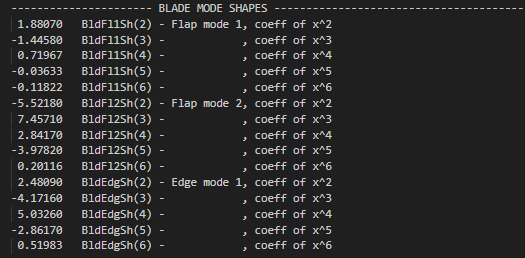Hi all,
I have some doubts about how ElastoDyn blade inputs are set up in the MHK RM1 Floating Reference Model in GitHub. If I understand correctly, the blade structural parameters were derived from Structural Design of a Horizontal-Axis Tidal Current Turbine Composite Blade (Bir et al., 2011). I’m hoping someone could enlighten me why the following mass and stiffness adjustment factors were applied in the ElastoDyn_Blade input file?
2.5 AdjBlMs - Factor to adjust blade mass density (-)
1.0E-05 AdjFlSt - Factor to adjust blade flap stiffness (-)
1.0E-05 AdjEdSt - Factor to adjust blade edge stiffness (-)
I further noticed that the unit mass of the blades are not consistent with the values in Table 4 of the conference paper. Does the input file assume that the blade is filled with certain material?
When running the analysis with stiffness adjustment of 1.0, I stumbled upon this error which suggests that the blades are undergoing large deflection and there is a tower strike.
I find this peculiar because, if I understand correctly, changing the blade stiffness adjustment factor from 1.0E-05 to 1.0 would make the blade stiffer and it would deflect less.
Regards,
Andhi

